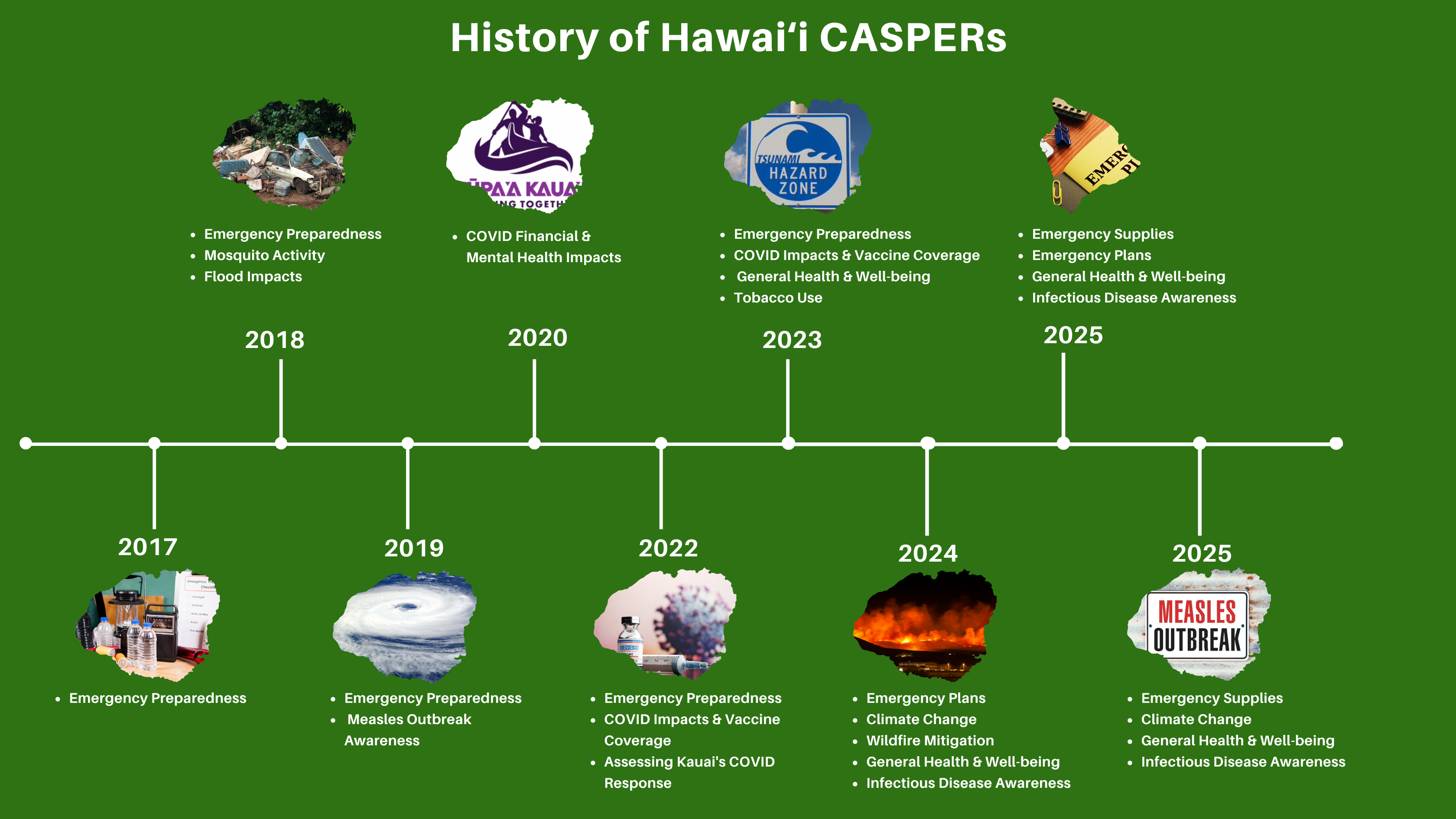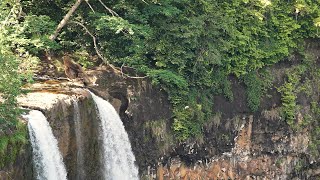CASPER
Click here to view a video on Kauai CASPERs
Methodology
CASPER is a two-stage cluster sampling methodology developed by the Centers for Disease Control and Prevention (CDC) to rapidly obtain information about the health and resource needs of a community. Information obtained is generalizable to the entire sampling frame, providing population-based estimates.
The first stage, cluster selection, begins with the determination of a sampling frame, or the area from which the sample is selected and to which the data is generalized. Once the sampling frame is determined, thirty census blocks (termed “clusters”) are randomly selected. The probability of a census block being selected is proportional to the number of housing units located within it.
The second stage of sampling, household selection, is usually completed by survey teams in the field. This stage involves systematic selection of seven households per cluster. Homes are selected by dividing the total number of housing units in the cluster by seven (the target number of surveys per cluster) to determine each cluster’s sequence number (“n”). Survey teams then attempt to interview every “nth” house, with an ultimate target of 210 surveys (30 clusters x 7 surveys per cluster).

History of CASPERs on Kauai
While the CASPER methodology is typically used to assess disaster-related impacts and needs, CASPERs can also be used to establish baseline preparedness levels and build capacity to conduct CASPERs post-disaster. The Kauai District Health Office (KDHO) conducted CASPERs annually from 2017-2025 (excluding 2021) to monitor trends in the emergency preparedness of island residents. Several of these CASPERs also included disaster components such as evaluating impacts from a major flood event as well as the COVID-19 pandemic.
The sampling frame for all Kauai CASPERs is occupied housing units on the island of Kauai. 2020 census block data was used to select thirty clusters via random number generation. Kauai has a total of 1,344 census blocks, 30,157 housing units, 24,712 occupied housing units, and a population of approximately 73,000. As a major tourist destination, many housing units are not occupied by residents and are classified as “vacant” in census data. To better capture data representative of Kauai residents, cluster selection used occupied housing units rather than total housing units to reduce the likelihood of selecting clusters with primarily short-term vacation rentals, which aren’t eligible for survey completion.
Survey planners utilized satellite imagery and County of Kauai Real Property tax map data to pre-select households for participation. This methodology saves time in the field, ensures adherence to systematic household selection process, and improved efforts to include additional dwelling units that are typically hidden from street view, and often missed during field enumeration processes.
CASPER Resources
Kauai 2025 CASPER Final Report
Kauai 2024 CASPER Final Report
Kauai 2023 CASPER Final Report
Kauai 2022 CASPER Final Report
Kauai 2020 COVID-19 CASPER Final Report
Kauai 2019 CASPER Final Report
Kauai 2018 CASPER Final Report
Kauai 2017 CASPER Preliminary Report
3040 Umi St. Lihue, HI | (808) 241-3495 | [email protected]
A WordPress.com site


